American Threnody est un film américain de genre Documentaire
American Threnody (2007)

Si vous aimez ce film, faites-le savoir !
American Threnody is a 2007 American documentary film, directed by Robert Rex Jackson. It concerns the Maxey Flat Low Level Radioactive Waste facility in eastern Kentucky. The facility was built on the former site of the farm where the filmmaker's grandfather was born. The film examines the impact of the facility on the community and examines the persistent containment problems that have been the subject of media coverage. Current methods of storing and disposing of transuranic isotopes and how they differ from the techniques used at Maxey Flat are also explored.
Commentaires
Postez un commentaire :
Suggestions de films similaires à American Threnody
Il y a 8965 ayant les mêmes genres cinématographiques, 1033 films qui ont les mêmes thèmes (dont 62 films qui ont les mêmes 4 thèmes que American Threnody), pour avoir au final 70 suggestions de films similaires.Si vous avez aimé American Threnody, vous aimerez sûrement les films similaires suivants :
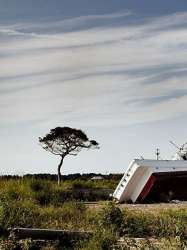
My Atomic Aunt (2013)
Genres Documentaire
Thèmes L'environnement, La mer, Transport, Documentaire sur l'environnement, Documentaire historique, Documentaire sur le nucléaire, Documentaire sur les technologies, Film catastrophe, Catastrophe sismologique
Note67%





Surviving the Tsunami brings together social, environmental, and personal perspectives of the national catastrophe of the Fukushima nuclear meltdown. In the documentary, Kyoko Miyake travels back to her hometown in Namie, Fukushima, to revisit her old life and assess the trauma still lingering from the disaster. She revisits Namie, her mother's hometown and meets the people who depended on the success of the nuclear plant for their livelihood. The film also follows Bunsei Watanabe and Kyoko Miyake's Aunt Kuniko, two people who hope for the rejuvenation of Namie, despite the disaster that has occurred. Despite having lost family, friends, and jobs due to the meltdown and subsequent fear of the contamination zone, these two individuals are determined to rebuild their towns and neighborhoods and bring back the sense of community they once had. The film follows the residents of Namie, with emphasis on the experiences of Aunt Kuniko, as they come to terms with the reality of living in or near the "radiation zone" left in the wake the plant's nuclear meltdown. Surviving the Tsunami offers a different perspective on Japanese culture, national identity, human adaption, and global nuclear energy and proliferation.

The Fog of War (2003)
, 1h35Réalisé par Errol Morris
Origine Etats-Unis
Genres Guerre, Documentaire, Historique
Thèmes L'environnement, Documentaire sur l'environnement, Documentaire sur la guerre, Documentaire historique, Documentaire sur le nucléaire, Documentaire sur les technologies, Politique
Acteurs Errol Morris
Note80%





Sont principalement évoqués son rôle pendant la Seconde Guerre mondiale, l'accession au pouvoir du président Kennedy puis la crise des missiles de Cuba, et le déploiement de l'armée américaine au Vietnam.

Kahl (1961)
, 12minutesGenres Documentaire
Thèmes L'environnement, Documentaire sur l'environnement, Documentaire sur le nucléaire, Documentaire sur les technologies
Note61%






Silent Storm (2004)
, 1h30Réalisé par Peter Butt
Genres Documentaire
Thèmes L'environnement, Documentaire sur l'environnement, Documentaire sur la guerre, Documentaire historique, Documentaire sur le nucléaire, Documentaire sur les technologies
Acteurs Bille Brown
Note73%





From 1957 to 1978, scientists secretly removed bone samples from over 21,000 dead Australians as they searched for evidence of the deadly poison, Strontium 90 - a by-product of nuclear testing. Silent Storm reveals the story behind this astonishing case of officially sanctioned 'body-snatching'. Set against a backdrop of the Cold War, the saga follows celebrated scientist, Hedley Marston, as he attempts to blow the whistle on radioactive contamination and challenge official claims that British atomic tests posed no threat to the Australian people. Marston's findings are not only disputed, he is targeted as 'a scientist of counter-espionage interest'.
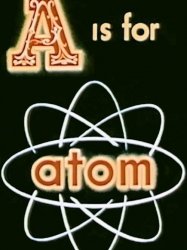
A is for Atom (1953)
Genres Documentaire, Animation
Thèmes L'environnement, Documentaire sur l'environnement, Documentaire sur le nucléaire, Documentaire sur les technologies
Note68%





A narrator begins the piece by relating what an atom is and how atomic energy can be harnessed by man to produce "limitless" energy. Dr. Atom (a caricature with an atom for a head) then explains the similarities between the solar system and atomic structure. He then goes on to relate how the atom is made up of protons, neutrons, and electrons. After this, the narrator explains how there are more than 90 elements with many possible isotopes for each.

Original Child Bomb (2004)
, 57minutesGenres Documentaire
Thèmes L'environnement, La mer, Transport, Aviation, Documentaire sur l'environnement, Documentaire sur la guerre, Documentaire historique, Documentaire sur le nucléaire, Documentaire sur les technologies, Politique, Documentaire sur la Seconde Guerre mondiale
Note68%





Original Child Bomb begins with a recreation of the dropping of Little Boy from the perspective of Hiroshima's residents. It is joined with both historical and contemporary footage and overlaid with various voice-overs. The documentary moves on to offer the accounts of several Japanese witnesses of the atomic bombing destruction.

Чорнобиль.3828 (2011)
, 30minutesOrigine Ukraine
Genres Documentaire, Historique
Thèmes L'environnement, Documentaire sur l'environnement, Documentaire historique, Documentaire sur le nucléaire, Documentaire sur les technologies, Film catastrophe
Note74%





Twenty-five years have passed since Valeriy Starodumov worked as a dosimeter scout in September 1986. Valeriy worked at the epicenter of the explosion, the reactor's operation area, which was the most radioactive part of the site. The protagonist, a direct participant in the operation, went to the roof himself and brought people there after a failed attempt to clear the area with robots. At the government level, it was decided to assign soldiers and cadets of military schools to the task of cleaning the roofs. Unique pictures of the events of 1986 are widely used in the film. "Chernobyl.3828" is dedicated to people who saved the world from the radioactive contamination at the cost of their health and life.
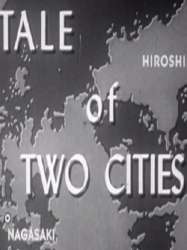
Tale of Two Cities (1946)
, 12minutesOrigine Etats-Unis
Genres Documentaire
Thèmes L'environnement, La mer, Transport, Aviation, Documentaire sur l'environnement, Documentaire sur la guerre, Documentaire historique, Documentaire sur le nucléaire, Documentaire sur les technologies, Politique, Documentaire sur la Seconde Guerre mondiale
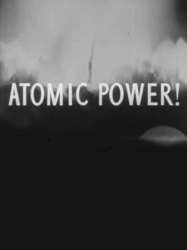
Atomic Power (1946)
, 18minutesOrigine Etats-Unis
Genres Documentaire
Thèmes L'environnement, Documentaire sur l'environnement, Documentaire sur la guerre, Documentaire historique, Documentaire sur le nucléaire, Documentaire sur les technologies
Note54%





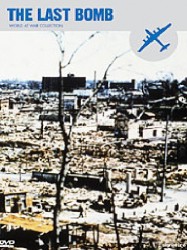
The Last Bomb (1945)
, 35minutesRéalisé par Frank Lloyd
Origine Etats-Unis
Genres Documentaire
Thèmes L'environnement, La mer, Transport, Aviation, Documentaire sur l'environnement, Documentaire sur la guerre, Documentaire historique, Documentaire sur le nucléaire, Documentaire sur les technologies, Politique, Documentaire sur la Seconde Guerre mondiale, Forces armées des États-Unis
Acteurs Reed Hadley, John Arthur Kennedy, James Seay, Don Taylor
Note63%





 Connexion
Connexion